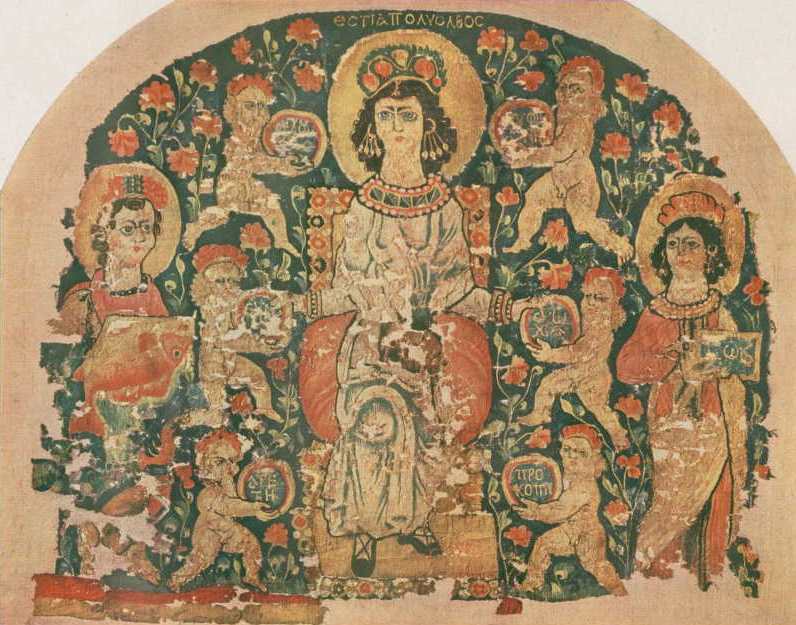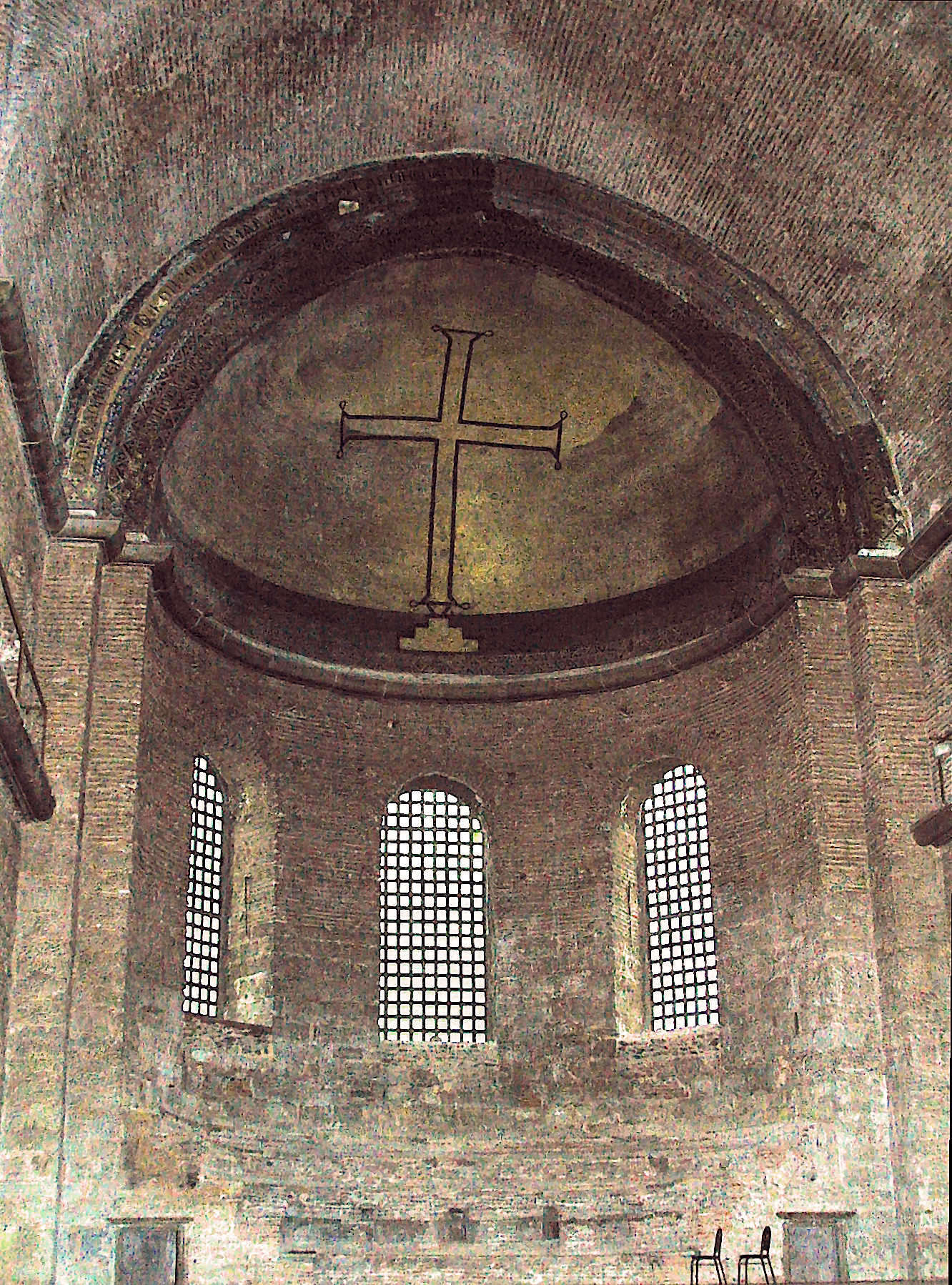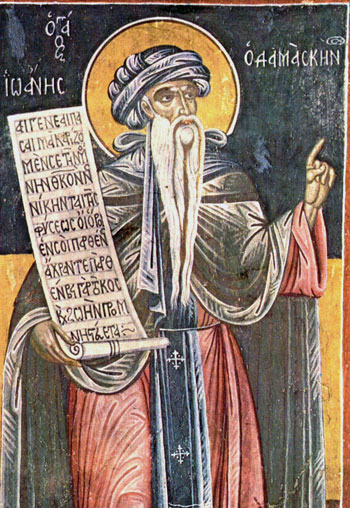|
Mar Saba
The Holy Lavra of Saint Sabbas, known in Arabic and Syriac as Mar Saba (; ; ; ) and historically as the Great Laura of Saint Sabas, is a Greek Orthodox monastery overlooking the Kidron Valley in the Bethlehem Governorate of Palestine, in the West Bank, at a point halfway between Bethlehem and the Dead Sea. The monks of Mar Saba and those of subsidiary houses are known as Sabaites. Mar Saba is considered one of the world's oldest (almost) continuously inhabited monasteries, and it maintains many of its ancient traditions. One in particular is the restriction on women entering the main compound. The only building women can enter is the Women's Tower, near the main entrance. History Byzantine period The monastery was founded by Sabbas the Sanctified in 483 on the eastern side of the Kidron Valley, where, according to the monastery's website, the first seventy hermits gathered around the hermitage of St Sabbas. Later on, the laura relocated to the opposite, western side of the ... [...More Info...] [...Related Items...] OR: [Wikipedia] [Google] [Baidu] |
Dumbarton Oaks
Dumbarton Oaks, formally the Dumbarton Oaks Research Library and Collection, is a historic estate in the Georgetown neighborhood of Washington, D.C. It was the residence and gardens of wealthy U.S. diplomat Robert Woods Bliss and his wife Mildred Barnes Bliss. The estate was founded by the Bliss couple, who gave the home and gardens to Harvard University in 1940. In 1944, it was the site of the Dumbarton Oaks Conference, which developed plans for the founding of the United Nations following World War II. The part of the landscaped portion of the estate that was designed as an enhanced "natural" area, was given to the National Park Service and is now Dumbarton Oaks Park. The research institute that has emerged from the bequest to Harvard is dedicated to supporting scholarship in the fields of Byzantine and Pre-Columbian studies, as well as garden design and landscape architecture through its research fellowships, meetings, exhibitions, and publications. It also opens its g ... [...More Info...] [...Related Items...] OR: [Wikipedia] [Google] [Baidu] |
Abd Al-Malik Ibn Marwan
Abd al-Malik ibn Marwan ibn al-Hakam (; July/August 644 or June/July 647 – 9 October 705) was the fifth Umayyad caliph, ruling from April 685 until his death in October 705. A member of the first generation of born Muslims, his early life in Medina was occupied with pious pursuits. He held administrative and military posts under Caliph Mu'awiya I (), founder of the Umayyad Caliphate, and his own father, Caliph Marwan I (). By the time of Abd al-Malik's accession, Umayyad authority had collapsed across the Caliphate as a result of the Second Fitna and had been reconstituted in Bilad al-Sham, Syria and Egypt in the Middle Ages, Egypt during his father's reign. Following a Battle of Khazir, failed invasion of Iraq in 686, Abd al-Malik focused on securing Syria before making further attempts to conquer the greater part of the Caliphate from his principal rival, the Mecca-based caliph Abd Allah ibn al-Zubayr. To that end, he concluded an unfavorable truce with the reinvigorated Byz ... [...More Info...] [...Related Items...] OR: [Wikipedia] [Google] [Baidu] |
Damascus
Damascus ( , ; ) is the capital and List of largest cities in the Levant region by population, largest city of Syria. It is the oldest capital in the world and, according to some, the fourth Holiest sites in Islam, holiest city in Islam. Known colloquially in Syria as () and dubbed, poetically, the "City of Jasmine" ( ), Damascus is a major cultural center of the Levant and the Arab world. Situated in southwestern Syria, Damascus is the center of a large metropolitan area. Nestled among the eastern foothills of the Anti-Lebanon mountain range inland from the eastern shore of the Mediterranean on a plateau above sea level, Damascus experiences an arid climate because of the rain shadow effect. The Barada, Barada River flows through Damascus. Damascus is one of the List of oldest continuously inhabited cities, oldest continuously inhabited cities in the world. First settled in the 3rd millennium BC, it was chosen as the capital of the Umayyad Caliphate from 661 to 750. Afte ... [...More Info...] [...Related Items...] OR: [Wikipedia] [Google] [Baidu] |
Iconolatry
Iconolatry (Greek: εἰκών, ''eikon'', 'picture or image', + λατρεία, '' latreia'', 'veritable (full) worship or adoration') designates the idolatric worship or the adoration of icons. In the history of Christianity, iconolatry was mainly manifested in popular worship, as freedom of worship while others viewed it as superstitious belief in the divine nature of icons or deities. It was practiced as a focal point on icons, and other deities representing various saints, angels and the God. One of extreme practices of iconolatry was scraping parts of icons into the Holy Communion. Iconolatry is the opposite of iconoclasm, and it also should not be confused with iconophilia, designating the moderate veneration of icons. Both extreme positions, iconolatry and iconoclasm, were rejected in 787 by the Second Council of Nicaea, being the seventh Ecumenical Council. The Council decided that holy icons should not be destroyed, as was advocated and practiced by the Byzantine ico ... [...More Info...] [...Related Items...] OR: [Wikipedia] [Google] [Baidu] |
Leo III The Isaurian
Leo III the Isaurian (; 685 – 18 June 741), also known as the Syrian, was the first List of Byzantine emperors, Byzantine emperor of the Isaurian dynasty from 717 until his death in 741. He put an end to the Twenty Years' Anarchy, a period of great instability in the Byzantine Empire between 695 and 717, marked by the rapid succession of several emperors to the throne, along with ending the continual defeats and territorial losses the Byzantines had suffered during the 7th century. He also successfully defended the Empire against the invading Umayyads and Byzantine Iconoclasm, forbade the veneration of icons. Early life Leo III was born in Germanikeia, Commagene, which is in modern Kahramanmaraş in Turkey. His original name was Konon (). Leo’s native tongue was Syriac language, Syriac or Arabic and he was described by Theophanes the Confessor as "the Saracen-minded," although there is very little evidence that he was directly influenced by Islam. After the victory of Ju ... [...More Info...] [...Related Items...] OR: [Wikipedia] [Google] [Baidu] |
Byzantine Iconoclasm
The Byzantine Iconoclasm () are two periods in the history of the Byzantine Empire when the use of religious images or icons was opposed by religious and imperial authorities within the Ecumenical Patriarchate (at the time still comprising the Roman-Latin and the Eastern-Orthodox traditions) and the temporal imperial hierarchy. The First Iconoclasm, as it is sometimes called, occurred between about 726 and 787, while the Second Iconoclasm occurred between 814 and 842. According to the traditional view, Byzantine Iconoclasm was started by a ban on religious images promulgated by the Byzantine Emperor Leo III the Isaurian, and continued under his successors. It was accompanied by widespread destruction of religious images and persecution of supporters of the veneration of images. The Papacy remained firmly in support of the use of religious images throughout the period, and the whole episode widened the East–West Schism, growing divergence between the Byzantine and Carolingian Em ... [...More Info...] [...Related Items...] OR: [Wikipedia] [Google] [Baidu] |
John Of Damascus
John of Damascus or John Damascene, born Yūḥana ibn Manṣūr ibn Sarjūn, was an Arab Christian monk, priest, hymnographer, and apologist. He was born and raised in Damascus or AD 676; the precise date and place of his death is not known, though tradition places it at his monastery, Mar Saba, near Jerusalem, on 4 December AD 749. A polymath whose fields of interest and contribution included law, theology, philosophy, and music, he was given the by-name of Chrysorroas (Χρυσορρόας, literally "streaming with gold", i.e. "the golden speaker"). He wrote works expounding the Christian faith, and composed hymns which are still used both liturgically in Eastern Christian practice throughout the world as well as in western Lutheranism at Easter.''Lutheran Service Book'' (Concordia Publishing House, St. Louis, 2006), pp. 478, 487. He is one of the Fathers of the Eastern Orthodox Church and is best known for his strong defence of icons. The Catholic Church regards him as ... [...More Info...] [...Related Items...] OR: [Wikipedia] [Google] [Baidu] |
Byzantine Rite
The Byzantine Rite, also known as the Greek Rite or the Rite of Constantinople, is a liturgical rite that is identified with the wide range of cultural, devotional, and canonical practices that developed in the Eastern Christianity, Eastern Christian church of Constantinople. The canonical hours are extended and complex, lasting about eight hours (longer during Great Lent) but are abridged outside of large Monastery, monasteries. An iconostasis, a partition covered with icons, separates Sanctuary#Sanctuary as area around the altar, the area around the altar from the nave. The Sign of the cross#Eastern Orthodoxy, sign of the cross, accompanied by bowing, is made very frequently, e.g., more than a hundred times during the Divine Liturgy#Byzantine Rite, divine liturgy, and there is prominent veneration of icons, a general acceptance of the congregants freely moving within the church and interacting with each other, and distinctive traditions of liturgical chanting. Some traditional ... [...More Info...] [...Related Items...] OR: [Wikipedia] [Google] [Baidu] |
Typikon
A typikon (or ''typicon'', ''typica''; , "that of the prescribed form"; Church Slavonic: ') is a liturgical book which contains instructions about the order of the Byzantine Rite office and variable hymns of the Divine Liturgy. Historical development Cathedral Typikon The ancient and medieval cathedral rite of Constantinople, called the "asmatikē akolouthia" ("sung services"), is not well preserved and the earliest surviving manuscript dates from the middle of the eighth century.As quoted in Taft, "Mount Athos...", Description in A. Strittmatter, "The 'Barberinum S. Marci'of Jacques Goar," EphL 47 (1933), 329-67 This rite reached its climax in the Typikon of the Great Church (Hagia Sophia) which was used in only two places, its eponymous cathedral and in the Basilica of Saint Demetrios in Thessalonica; in the latter it survived until the Ottoman conquest and most of what is known of it comes from descriptions in the writings of Saint Symeon of Thessalonica. Monastic Typ ... [...More Info...] [...Related Items...] OR: [Wikipedia] [Google] [Baidu] |
Theotokos
''Theotokos'' ( Greek: ) is a title of Mary, mother of Jesus, used especially in Eastern Christianity. The usual Latin translations are or (approximately "parent (fem.) of God"). Familiar English translations are "Mother of God" or "God-bearer" – but these both have different literal equivalents in , and Θεοφόρος respectively. The title has been in use since the 3rd century, in the Syriac tradition (as ) in the Liturgy of Mari and Addai (3rd century)''Addai and Mari, Liturgy of''. Cross, F. L., ed. ''The Oxford Dictionary of the Christian Church''. Oxford University Press. 2005. and the Liturgy of St James (4th century). The Council of Ephesus in AD 431 decreed that Mary is the ''Theotokos'' because her son Jesus is both God and man: one divine person from two natures (divine and human) intimately and hypostatically united. The title of Mother of God (Greek: ) or Mother of Incarnate God, abbreviated ΜΡ ΘΥ (the first and last letter of main two words in ... [...More Info...] [...Related Items...] OR: [Wikipedia] [Google] [Baidu] |






